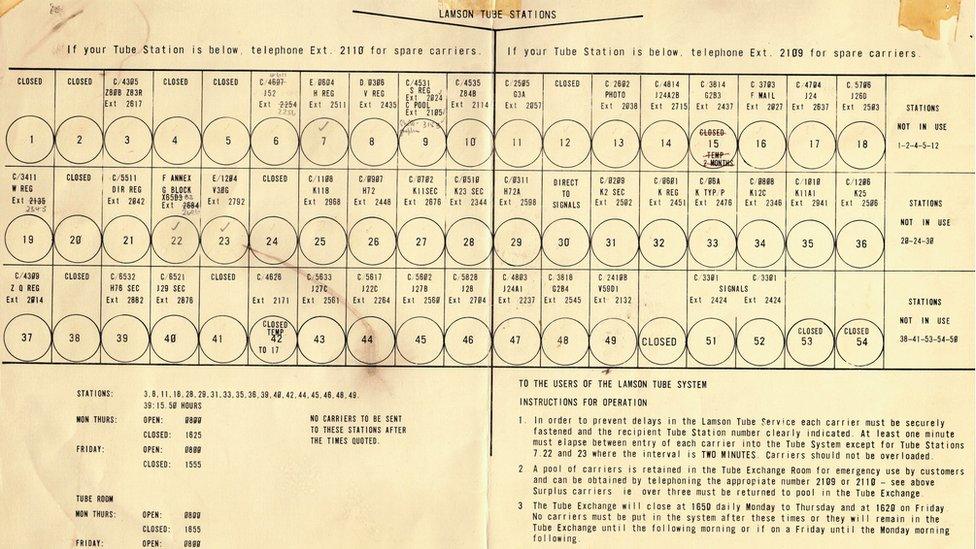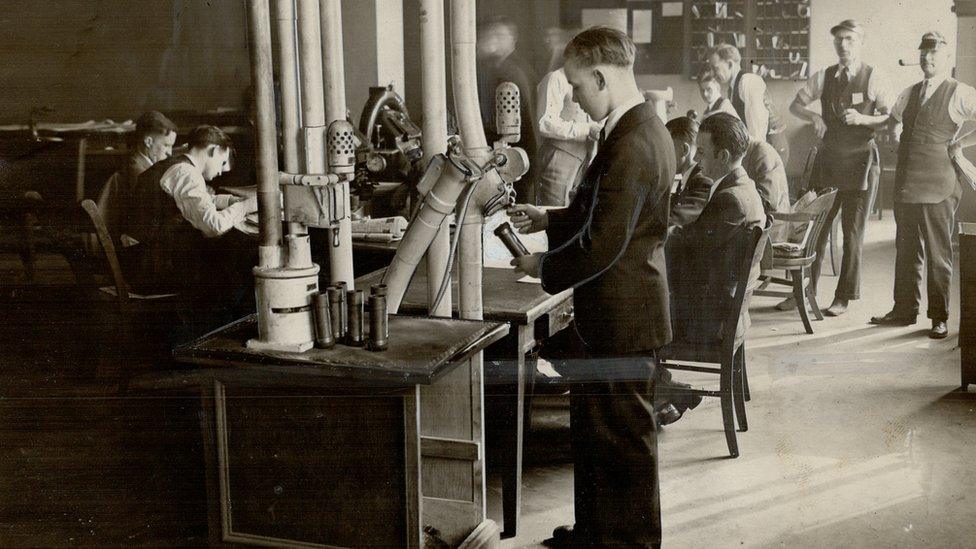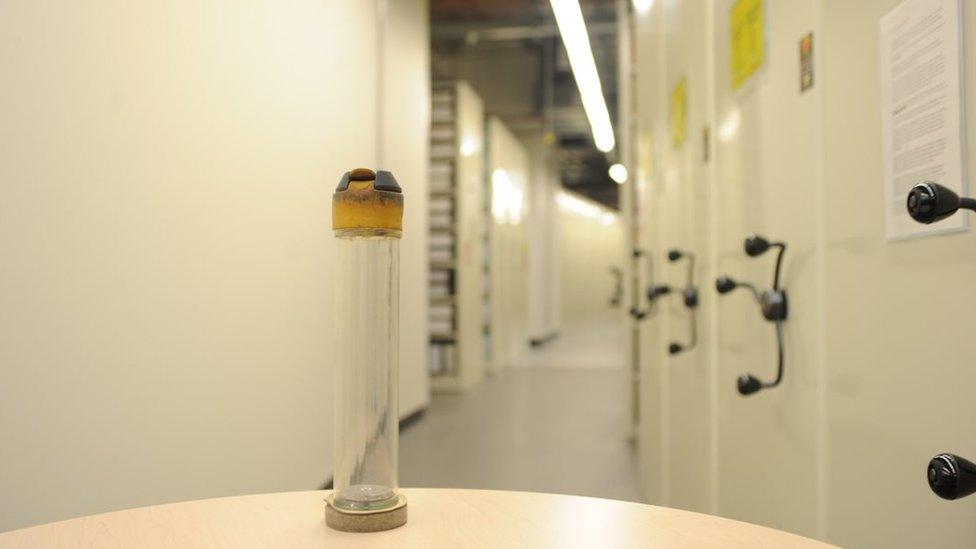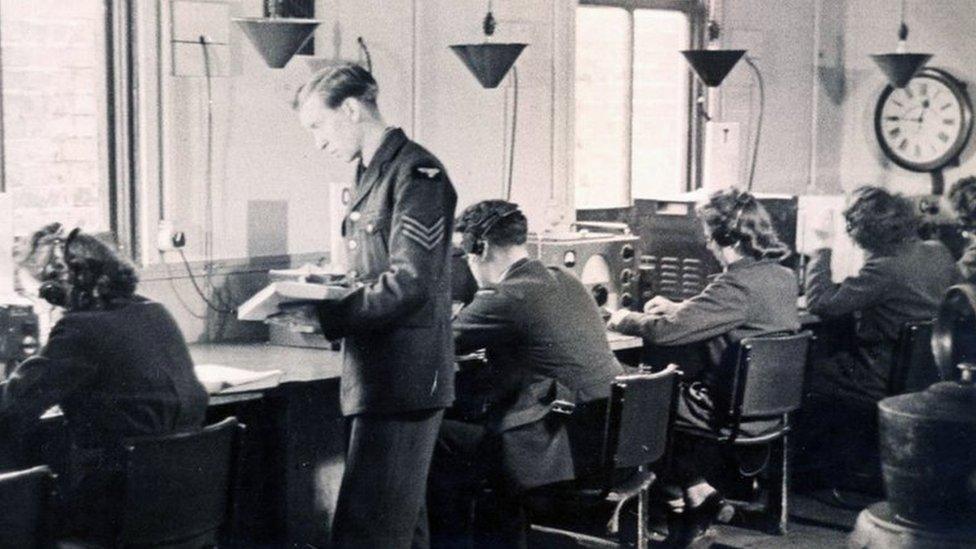GCHQ reveals top secret pneumatic tube wedding proposal
- Published

A map of the tube system which was in use until the late 1980s at GCHQ
A lovestruck agent at GCHQ in the 1950s used the organisation's pneumatic tube messaging system to propose to his girlfriend, it has been revealed.
The intelligence officer had met his partner at work but struggled to pluck up the courage to ask her to marry him.
The woman walked round to his office and accepted the proposal in person, leading to a happy 30-year marriage.
A GCHQ historian said the shy officer used the organisation's "tradition of ingenious solutions to tough problems".
The Government's Communications Headquarters has revealed the story to mark Valentine's Day.
The tubes, known as Lamson tubes after the company that built them, sent messages to different buildings across the agency's former site in Oakley, Cheltenham.
They were used to transmit sensitive documents in a matter of seconds to save staff long walks between buildings.

Pneumatic tubes were once common in many offices to deliver messages
More romantic reads:
The identities of the man, a former GCHQ linguist, and the woman, who worked as an analyst on the Soviet air force, have been kept secret because of the nature of their work.
But GCHQ historian Tony Comer, who met the officer, said he was the "shy and retiring type, and never quite found the right moment to ask her face to face".
"They married and lived happily ever after, all thanks to the aid of the Lamson tube," he said.

The romantic message would have been sent in a tube like this one
The tubes were used throughout the war at GCHQ, continuing until the late 1980s.
Although the system was mainly used to top secret files, it has been said staff used it to send chocolate éclairs to one another because they fitted in the pipes.
- Published1 November 2019

- Published9 July 2019

- Published14 December 2012
